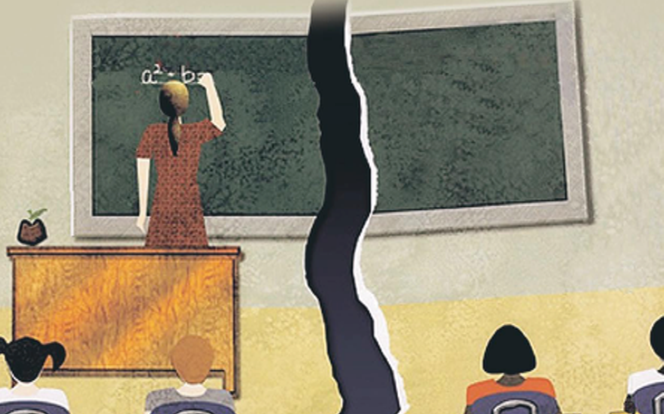
 By Nicholas von Wettberg
By Nicholas von Wettberg
At the recent Vanguard School Board Candidates Forum, one of the questions asked was about the Davis Joint Unified School District (DJUSD) and how it can provide opportunities for all its students, particularly those most in need.
With a shift in the type of student now enrolled at DJUSD schools, and with the current funding just enough to maintain existing district programs and services – only if Measure H is passed by voters – the school board has directed much of its efforts in the past year on closing the achievement gap.
“The district is changing demographically with more than a quarter of the students now considered Title I and nearly half now children of color,” Vanguard founder David Greenwald said. “There’s been a lot of talk about the achievement gap, but how can the district better ensure that there is equity among resources, particularly across the elementary schools?”
UC professor, Davis resident and current district parent of two, Bob Poppenga said that he has seen the district try hard to provide extra resources for areas with concentrations of low-income students and families.
Poppenga, who is running for one of two open seats on the November ballot, thinks a possibility is “some sort of coordination among the PTA to again increase the pie to provide more resources for every elementary school.”
He also suggested that, in order for students to attend the various school programs located outside their area, there should be some type of additional transportation provided.
In response to the question about ensuring equity among resources, trustee Alan Fernandes brought up his appointment to the district’s 26-member Strategic Planning Committee in 2014, saying it “was the charge to really revise our mission statement, our values, etc.”
He added that, every year the committee looks at its work to see whether the district remains on course, and during this year’s evaluation process, the term “equity” was discussed, in particular about the district making it more attainable.
The committee had difficulty reaching a conclusion on a definition for the word, according to Fernandes, because it means different things to different people.
“To me, it means that we are making sure that we’re providing all of the resources that are needed for all of our children in our elementary and I’m proud to say that when I first got on the board one of the things that I looked at was our district’s reliance on soft money to fund permanent positions,” said Fernandes, who believes that PTA funding served the district well during the economic recession, but does not provide resources for all district elementary schools.
Jose Granda began his response, referencing a previous proposal of his presented during his last campaign for a Davis school board seat, which also took place in 2014.
“The proposal that I made was to create a tutoring center precisely to cure the achievement gap for any student whether it’s low-income or whatever it is,” said Granda, a longtime Davis resident and engineering professor at Sacramento State.
“But I am critical of the board, they sold the property…something like that could be very beneficial to our students precisely to like have a tutoring center or strengthening some after-school programs so that they can combine learning with having some fun.”
In response to the property Granda had mentioned, Susan Lovenburg said it was considered surplus and “not needed as a school site.”
As for the need to give students extra help, her response was that “we do provide tutoring opportunities before, during and after school on all of our school sites.”
Lovenburg pointed out that district’s tool for closing the achievement gap is the Local Control Accountability Plan (LCAP).
“It’s the place where we are looking at the data, it’s the place where we’re spending our money and it’s the place where we can see whether we are making any progress,” she said. “So the Local Control Funding Formula was designed to create equitable education opportunities for all students.”
Lovenburg, who has served on school board since 2007, said the parcel tax is an investment in each child and an investment in the community.
On Thursday, October 5, the board will hold its regular meeting at the Community Chambers, where the main discussion/presentation/action item on the agenda is closing the achievement gap.
At the regular meeting last month, trustees heard a report on the results of the state’s spring tests, comprising the California Assessment of Student Performance and Progress (CAASPP) system.
The system and its Smarter Balanced Summative Assessments are full-length tests, done in two parts, and are aligned with the Common Core State Standards in English language arts/literacy (ELA) and mathematics.
Students in grades 3 through 8 and grade 11 are given the summative assessment in ELA and math, while those in grades 5, 8 and 10 take the assessment in science.
The goals for the upcoming staff presentation, as outlined in the report, are: review national and local trends, review themes from previous presentations, update on work this year, and provide a timeline for continued focus on closing the achievement/opportunity gap.